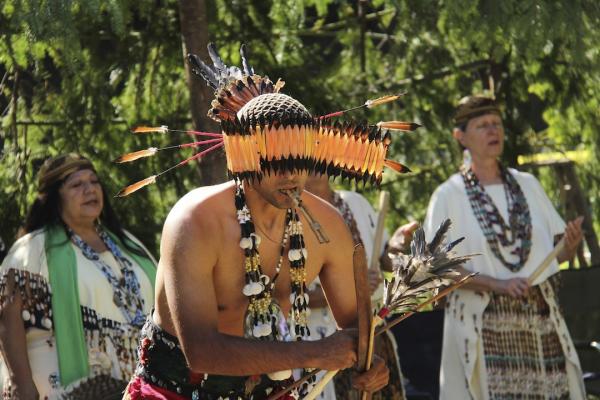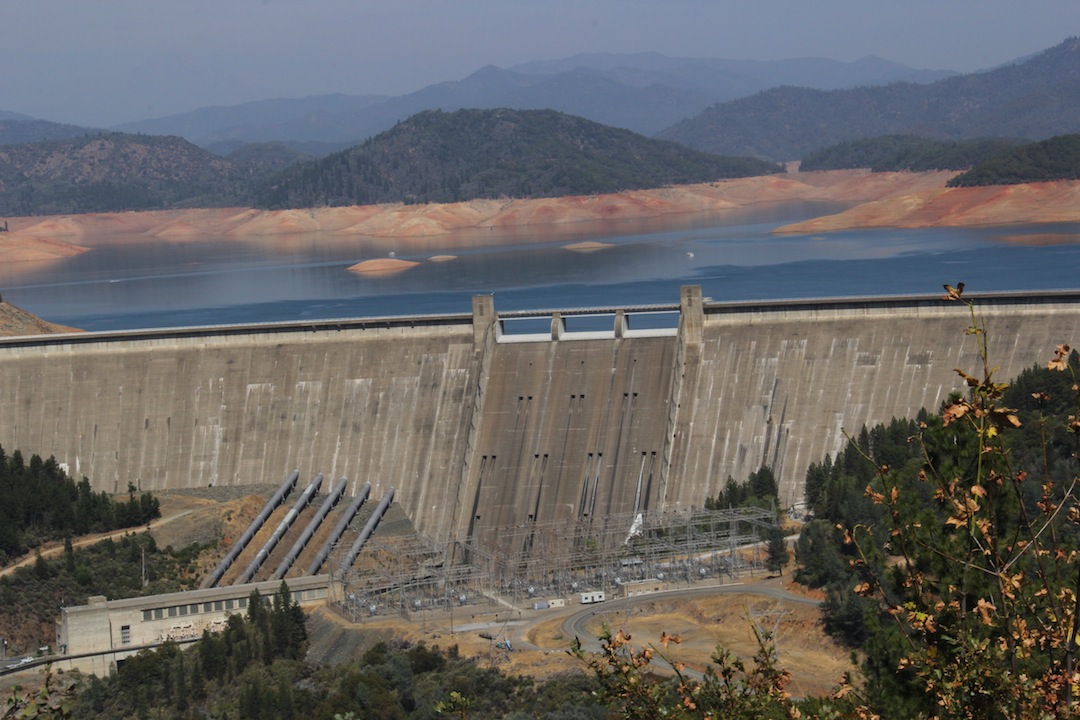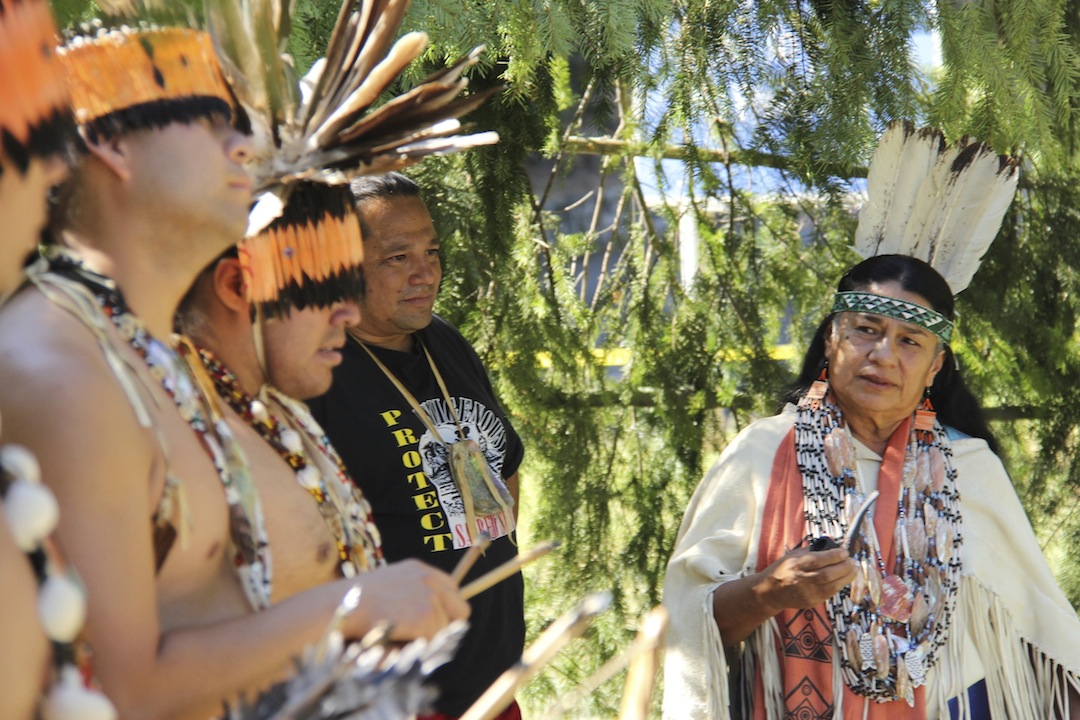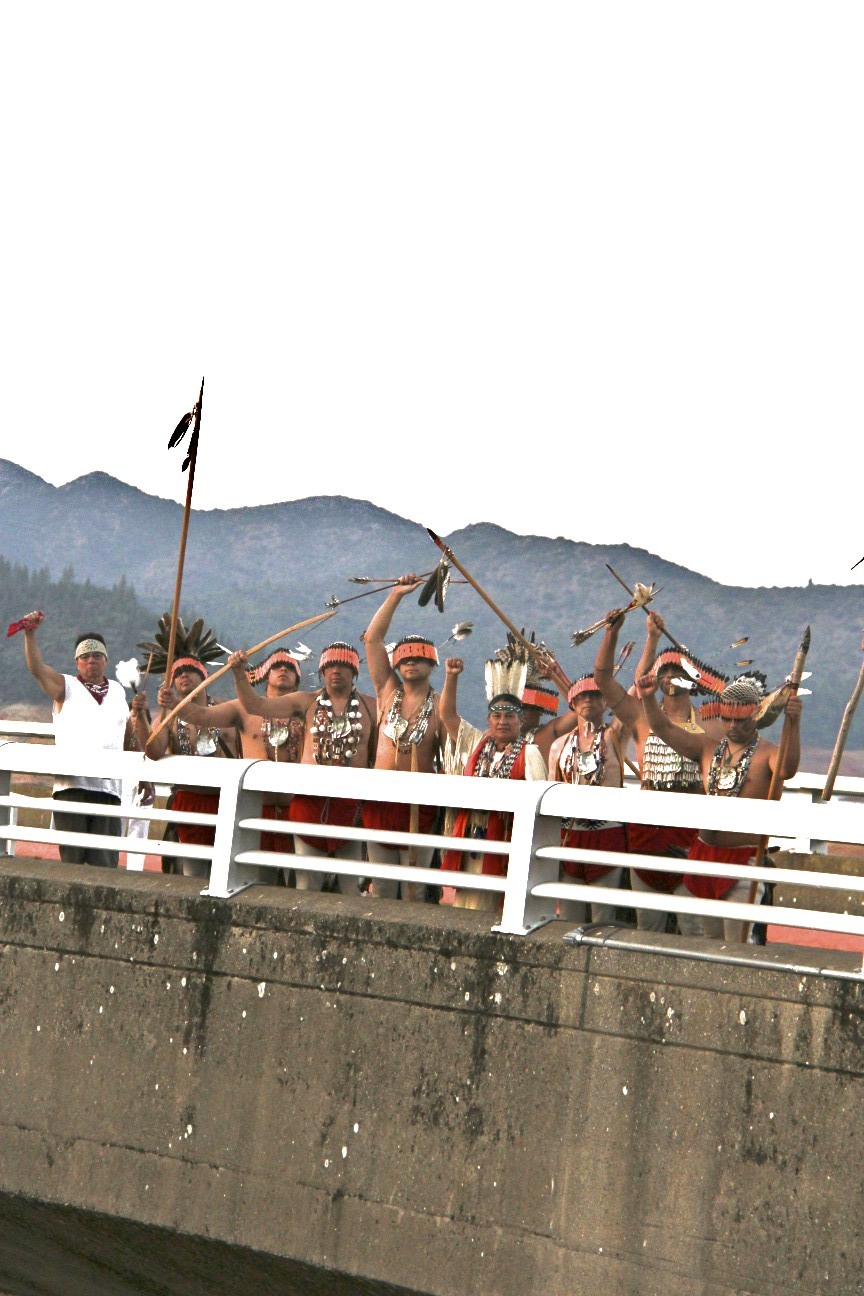Stop Damming Indians: Dancing Against Shasta Dam Raise

On the second day of the Winnemem Wintu’s War Dance at Shasta Dam, dancer Rob Wilson circled the sacred fire, crouching low, pounding the grass with his bare feet and exhaling a deep, guttural “hee” with every step.
Chief and Spiritual Leader Caleen Sisk said she immediately recognized Wilson’s movements as an “old dance step,” one Winnemem men performed long before the California Indian genocide and before the Shasta Dam cost the tribe their homes, their salmon and hundreds of sacred sites.
“It made my heart happy to see that,” Sisk said. “That dance came back from a long time ago, and it’s a good sign for our future if we keep putting down these prayers.”
The Winnemem Wintu performed a War Dance at the Shasta Dam, their second in 10 years, September 11-14 to seek guidance from their ancestors as they try to stop a federal plan to raise the Shasta Dam 18.5 feet, which would submerge or damage about 40 sites integral to the tribe’s religion, according to a 2012 study from the Stanford Center on Comparative Studies in Race and Ethnicity.
When the 602-foot Shasta Dam was constructed between 1938 and 1945 to expedite California’s transformation into a powerful agricultural economy, Winnemem homes, hundreds of sacred sites and 22 miles of the McCloud River were flooded by the resulting Shasta Lake, the dam’s reservoir.
According to the 1941 Central Valley Project Indian Lands Acquisition Act, which authorized the taking of Winnemem allotment land for the dam, the tribe was supposed to be compensated, potentially with “like lands,” but the law was never enforced, Sisk said.
The U.S. Bureau of Reclamation is currently finalizing a feasibility study and environmental impact statement on an 18.5-foot raise of the dam, which would increase statewide water storage by 1.5 percent and increase water of agriculture and metropolitan uses by 0.2 percent. According to BOR documents, the final feasibility report and environmental impact statement are expected to be finished by the end of the year. If then approved by the Secretary of the Interior, the project could be authorized for construction by Congress by 2015 or 2016.
BOR officials declined to comment.
The raise would flood about another mile of the McCloud River, submerging sites integral to Coming of Age ceremonies for men and women, a site used to heal women who’ve been assaulted and many other cultural resources vital to the continuation of Winnemem ways.
RELATED: Raising Dam Would Drown Sacred Site
Tribal members said the War Dance was not about violence but about connecting with the spirit world and gaining strength and unity for the struggle ahead. For four days, the men fasted, subsisting only on acorn water and deer broth, and slept beneath the dance arbor to maintain their focus.
The current extreme drought in California has accelerated the public discussion about approving the Shasta Dam raise as well as other water infrastructure projects with California Governor Jerry Brown and U.S. Senator Dianne Feinstein both openly supporting the plan.
Though the BOR states in its feasibility report that the dam raise would most benefit salmon by providing more cold water for the lower Sacramento River, Westlands Water District, which supplies water to roughly 600 farms in the arid San Joaquin Valley, has committed to paying for 20 percent of the copy billion project.
Westlands officials declined to comment. The U.S. Fish and Wildlife Service studied the dam raise proposal and concluded there would be minimal benefits to salmon for the raise, and a biological opinion states a higher priority should be getting salmon above the dam to colder glacial waters like the McCloud.
“We have no other place to go where we can be Winnemem, so for us the dam is a weapon of mass destruction,” Sisk said. “We were left the poorest of the poor when the dam was built, so how can they justify flooding us out again?”
© 1998 - 2014 Indian Country Today. All Rights Reserved To subscribe or visit go to: http://www.indiancountry.comRead more at http://indiancountrytodaymedianetwork.com/2014/09/18/stop-damming-indians-dancing-against-shasta-dam-raise-156921


